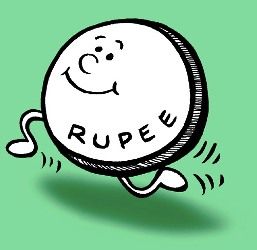With apologies to Frank Sinatra:
It's ve-e-ry clear
Volatility is here to stay
Not for a year
But ever and a day…
In time, the dollar may crumble
The euro may rumble…
They're really not built to stay
But… Volatility ain't going away any time soon. 2013 was the most volatile year for the rupee in at least the last 10, with 2009 not far behind.
Volatility ain't going away any time soon. 2013 was the most volatile year for the rupee in at least the last 10, with 2009 not far behind.
2012 was also a rough year with average rupee volatility reaching 10.4 per cent, versus the 11.5 per cent peak last year.
As we learn to live with this elevated volatility, it is important that market users monitor volatility as well as spot and forward rates.
Again, in terms of planning or making forecasts, we need to look at possible drivers of volatility as much as, if not more than, possible drivers of exchange rates.
Now, clearly, there are both global and domestic drivers of volatility. Looking first at the global market, the correlation between the average annual volatility of the rupee and that of gold (assuming it as a proxy for the risk-on risk-off phenomenon that has driven markets for much of the past few years) has been a mere 35 per cent.
The correlation does rise sharply (to over 60 per cent) when volatilities peak - that is, during significant global events - but overall this would suggest that the bulk of rupee volatility is driven by local market considerations - inflation, the current account deficit, and political stagnation, all of which were major forces over the past two years.
Looking at these drivers in turn, inflation will certainly benefit both from the no-place-but-up situation on the supply side and Raghuram Rajan's no-nonsense hand on the tiller.
The current account deficit, while substantially better than it was 12 months ago, will remain an issue since while improving US (and global) growth will help exports, the gold position needs to be made "normal" sooner rather than later.
The prognosis for the current account deficit will also depend on the future path of the rupee, which from the Reserve Bank of India's standpoint appears ambivalent - on the one hand, greater liberalisation will lead to improving inflows; on the other, the need to sustain export growth suggests preferred weakness.
Political stagnation will certainly give way to something
While he may have simply been talking his suit, he is a young man about to get married and, perhaps, needs to learn that logic has limited applicability in life, particularly when applied to markets (and, incidentally, love).
Far more interesting, and important, politically, is the Aam Aadmi Party (AAP), which is daily getting more cogent.
A few weeks ago, it was planning to contest 100 Lok Sabha seats; I read that it is readying for 300 seats.
Even if it wins only 15 to 20 per cent of the seats it contests - and let's not forget that in Delhi it won 40 per cent, and this is before real momentum began swinging its way - it is clear that the party is not going away.
What is significant for this discussion is that, by definition, the AAP is, and will continue to be, disruptive if it is anything. And disruption is almost a synonym for volatility.
Again, recall that in the last election year (2009), average volatility reached over 11 per cent, a jump of over 2.5 per cent from the previous year.
Of course, 2009 was the year of the unfolding of a "once-in-a-lifetime" crisis, and while there are - as always - doomsayers around, it is unlikely that this year will bring a reprise of that situation.
Thus, while rupee volatility may not screech much higher in 2014, there are several forces operating domestically to suggest that it will remain high. And, of course, there are always unknown unknowns both domestically and in the global market.
Recognising that the average range of the rupee in each of the last six years has been nearly Rs 10 (or, much more frighteningly, 18 per cent of its mean value), prudence would suggest a forecast range for 2014 of Rs 9 - Rs 10 (around 15 per cent) about the current spot of 62.
Of course, that kind of range doesn't particularly help hedging decisions, but a little deeper analysis of the rupee's volatility shows that today (January 3) it is way down from the average. At under seven per cent, it is just about at the 10 per cent cut-off of its past two-year distribution - this means that there's a 90 per cent chance that volatility will be moving higher soon.
It's time to increase hedge ratios - exporters, still smiling, should continue to buy out-of-the-money puts; importers and ECB-wallahs should buy call spreads.
Happy New Year!











